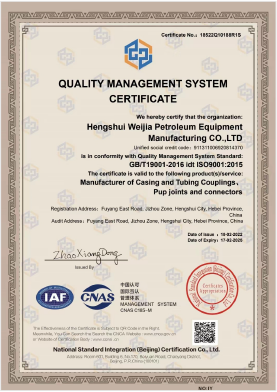- Afrikaans
- Albanian
- Amharic
- Arabic
- Armenian
- Azerbaijani
- Basque
- Belarusian
- Bengali
- Bosnian
- Bulgarian
- Catalan
- Cebuano
- Corsican
- Croatian
- Czech
- Danish
- Dutch
- English
- Esperanto
- Estonian
- Finnish
- French
- Frisian
- Galician
- Georgian
- German
- Greek
- Gujarati
- Haitian Creole
- hausa
- hawaiian
- Hebrew
- Hindi
- Miao
- Hungarian
- Icelandic
- igbo
- Indonesian
- irish
- Italian
- Japanese
- Javanese
- Kannada
- kazakh
- Khmer
- Rwandese
- Korean
- Kurdish
- Kyrgyz
- Lao
- Latin
- Latvian
- Lithuanian
- Luxembourgish
- Macedonian
- Malgashi
- Malay
- Malayalam
- Maltese
- Maori
- Marathi
- Mongolian
- Myanmar
- Nepali
- Norwegian
- Norwegian
- Occitan
- Pashto
- Persian
- Polish
- Portuguese
- Punjabi
- Romanian
- Russian
- Samoan
- Scottish Gaelic
- Serbian
- Sesotho
- Shona
- Sindhi
- Sinhala
- Slovak
- Slovenian
- Somali
- Spanish
- Sundanese
- Swahili
- Swedish
- Tagalog
- Tajik
- Tamil
- Tatar
- Telugu
- Thai
- Turkish
- Turkmen
- Ukrainian
- Urdu
- Uighur
- Uzbek
- Vietnamese
- Welsh
- Bantu
- Yiddish
- Yoruba
- Zulu
Casing Connections and Threaded Couplings for Oil and Gas Applications
Casing Threads and Couplings An Overview
In the world of oil and gas drilling, the proper connection and integrity of casing pipes are paramount to ensuring both safety and efficiency. Casing threads and couplings are essential components of this connection system, providing the structural integrity needed to handle high pressures and harsh environmental conditions encountered during drilling operations.
The Importance of Casing Threads
Casing serves to protect the borehole and isolate different underground formations, preventing contamination and ensuring that the integrity of the well is maintained throughout its life. Casing threads refer to the helical grooves cut into the ends of casing pipes, allowing them to be screwed together with couplings to form a continuous and secure structure. These threads are engineered to withstand heavy loads and must possess high strength and durability to resist wear and tear during installation and operation.
Casing threads are typically categorized into various designs, including round threads, square threads, and special thread designs tailored for specific applications. The design of the threads affects the performance, ease of installation, and sealing capabilities of the casing joints. It’s crucial that the threads are cut with precision, as any imperfections can lead to failure in the connection, which may compromise the entire well.
Couplings The Connecting Element
Couplings serve as the intermediary connectors between two lengths of casing pipe. They are designed to provide a tight, leak-proof seal and maintain the integrity of the pressure within the casing. Couplings can be made from a variety of materials, including carbon steel and other alloys that ensure robustness and resistance to corrosion.
casing threads and couplings

There are different types of couplings, such as integral couplings, which are machined from the same material as the casing pipe, and threaded couplings that rely on casing threads for connection. Each type has its own advantages and is selected based on factors such as pressure requirements, depth of the well, and environmental conditions.
The Challenges of Casing Threads and Couplings
Despite their strong design, casing threads and couplings face various challenges. One major issue is the potential for thread damage during installation. Improper handling can lead to stripping or galling of the threads, resulting in compromised integrity. Ensuring that the threads are lubricated and properly aligned during installation can mitigate these risks.
Another challenge arises from the corrosive nature of the fluids and gases encountered in subsurface environments. Over time, corrosion can weaken the casing threads and couplings, leading to potential leaks or structural failures. Therefore, the selection of high-quality materials and protective coatings is essential in prolonging the lifespan of casing systems.
Conclusion
Casing threads and couplings play a critical role in the oil and gas industry by ensuring the safety and efficiency of drilling operations. Proper design, precision engineering, and material selection are fundamental to the performance of these components. As technology advances, innovations in casing systems are expected to improve their durability, efficiency, and ability to withstand the ever-increasing challenges presented by deep and ultra-deep water drilling environments. By continually focusing on the quality and reliability of casing threads and couplings, the industry can enhance its safety standards and operational efficiency, paving the way for more sustainable energy extraction practices.
-
Tubing Pup Joints: Essential Components for Oil and Gas OperationsNewsJul.10,2025
-
Pup Joints: Essential Components for Reliable Drilling OperationsNewsJul.10,2025
-
Pipe Couplings: Connecting Your World EfficientlyNewsJul.10,2025
-
Mastering Oilfield Operations with Quality Tubing and CasingNewsJul.10,2025
-
High-Quality Casing Couplings for Every NeedNewsJul.10,2025
-
Boost Your Drilling Efficiency with Premium Crossover Tools & Seating NipplesNewsJul.10,2025







